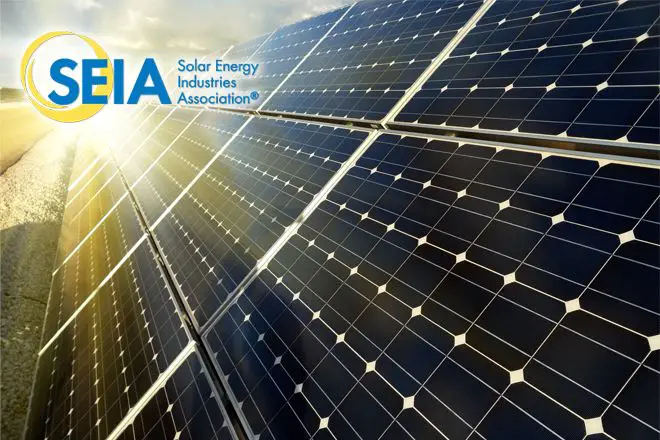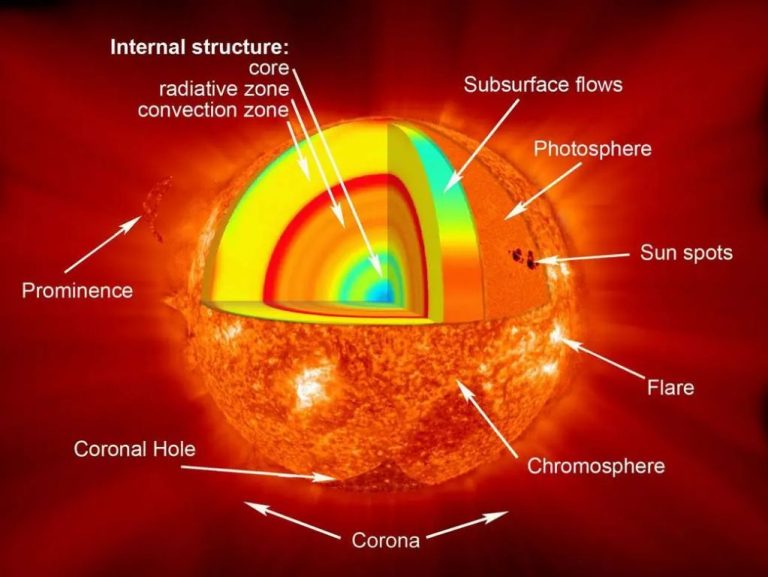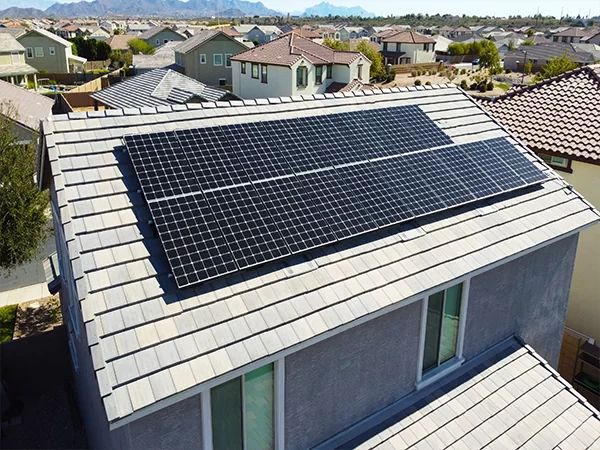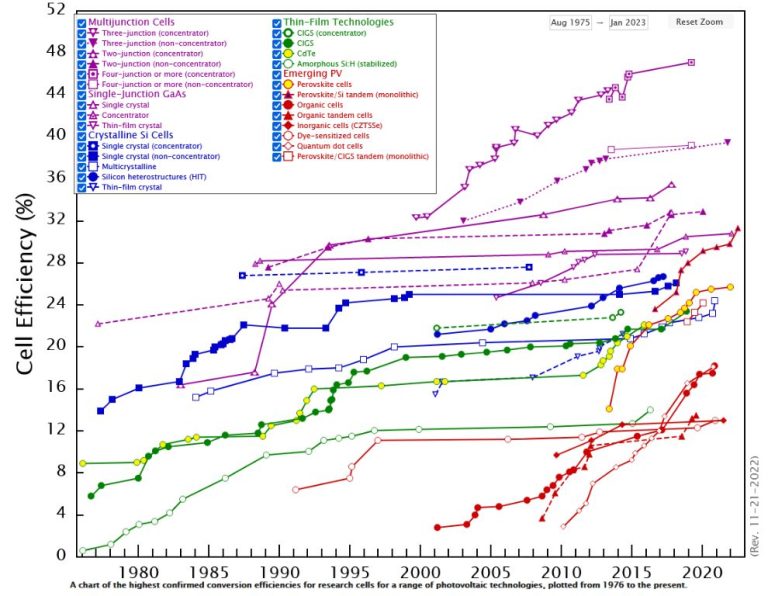What Is The Prediction For Solar Power?
Solar power, also known as photovoltaics, refers to the conversion of energy from sunlight into electricity. It works through the photovoltaic effect, in which materials exposed to light can generate an electric current. Solar cells made from semiconducting materials like silicon are commonly arranged on solar panels. When sunlight hits the cells, electrons are knocked loose from the atoms, allowing the electrons to flow through the material and produce electricity. This electricity can then be used to power homes, businesses, and the grid.
The use of solar power has expanded greatly in recent years. In the early 2000s, global solar power capacity was only a few gigawatts. But improvements in efficiency and cost reductions have enabled extraordinary growth. As of 2021, total worldwide capacity exceeded 880 gigawatts. While solar only accounts for around 3% of global electricity generation, it is now the fastest growing energy source. Solar power is now expanding at a pace of over 150 gigawatts per year, more than all other energy sources combined.
Solar Power Growth Trends
Solar power capacity has expanded rapidly over the past decade. According to the International Energy Agency (IEA), total global solar photovoltaic capacity went from 40 gigawatts in 2010 to over 580 gigawatts by the end of 2019, an average annual growth rate of over 40%.
The IEA projects that solar capacity could grow from 580 gigawatts today to over 4,500 gigawatts by 2040 in their stated policies scenario, an average increase of 15% per year. In their more ambitious sustainable development scenario, solar capacity could expand to over 8,500 gigawatts globally by 2040, growing by an average of nearly 20% annually.
Much of the projected growth is expected to come from expanding solar use in the electricity sector as costs continue to fall. Emerging markets in Asia, Africa and South America are also forecasted to deploy increasing levels of solar electricity. Rooftop solar adoption is projected to expand in major markets like the U.S., Europe, China and Japan as well.
Cost Decline
The costs of solar power have declined dramatically in the past decade, driven by economies of scale, manufacturing improvements, and technological innovations. From 2010 to 2020, the average utility-scale solar PV system cost fell by over 80%, from around $0.37 per watt to $0.05 per watt.
This steep cost reduction has primarily been driven by lower module and inverter prices as global production volumes have increased. As manufacturers have achieved larger economies of scale and improved production techniques, costs across the supply chain have come down. Increased market competition has also pushed down supplier margins. In addition, technology improvements like higher solar cell efficiencies have reduced non-module balance of system costs.
Industry experts predict solar PV costs will continue to decrease in the coming decades, with system costs falling by an additional 40-70% by 2050. Continued economies of scale, supply chain improvements, and new technologies like perovskite solar cells could enable this ongoing cost reduction trend. As solar becomes ever cheaper it will be increasingly competitive with fossil fuel sources, supporting its wider deployment around the world.
Policy Support
Government incentives and policies have been a major driver behind the rapid growth of solar power. Countries like China, the United States, Japan and Germany have implemented strong policy support to accelerate solar energy adoption such as tax credits, rebates, renewable portfolio standards and feed-in tariffs. These incentives help make solar power more affordable and attractive for both residential and utility-scale installations.
For example, renewable portfolio standards mandate that utilities generate a certain percentage of their electricity from renewable sources like solar. Feed-in tariffs provide guaranteed pricing and grid access for renewable energy producers. The long-term certainty from these policies encourages more investment into solar energy development and deployment. According to the International Renewable Energy Agency, feed-in tariffs have been responsible for 75% of global solar PV capacity installations.
As solar power achieves grid parity in more regions, the need for direct government incentives declines. However, policy support remains essential for integrating larger shares of variable solar power onto the electric grid. Policies that enable smart grid technologies, energy storage and dynamic pricing can facilitate higher solar energy adoption. Government policies have been and will continue being a key driver of solar power growth worldwide.
New Technologies
There have been a number of exciting developments in solar technology in recent years that have improved efficiency and opened up new applications. Some key innovations include:
Efficiency improvements – Researchers continue to push the limits of solar cell efficiency across various technologies. Multi-junction cells combining multiple semiconductor layers have achieved over 46% efficiency in lab settings. Perovskite solar cells are also advancing rapidly, with efficiency improving from 3% to over 25% in the past decade.
Storage improvements – Pairing solar with utility-scale batteries and energy storage is helping address intermittency issues and enabling broader grid integration. Advances in lithium-ion batteries and alternative storage technologies like flow batteries will facilitate further growth.
Novel designs/applications – Thin, flexible solar cells and solar textiles open up new possibilities for integrating solar into infrastructure and wearables. Floating solar farms placed on reservoirs reduce land usage. Space-based solar power could transmit solar energy collected in space back to Earth.
Grid Integration
As solar and wind energy production grows, integrating large amounts of variable renewable energy into the electric grid presents challenges. High levels of solar generation during midday can lead to oversupply on grids not designed for bi-directional flow. This has resulted in some solar curtailment to maintain grid stability.
However, solutions exist to allow much higher penetration of renewables. Utility-scale battery storage can store excess solar generation during peak output and dispatch it when needed. Better coordination of regional grids allows sharing of renewable resources across larger areas. Advanced inverters, grid management software, and forecasting tools provide grid operators better control. Retiring inflexible coal and nuclear baseload plants in favor of flexible natural gas and storage allows grids to adapt to variable generation. Smart grids and demand response technology shifts demand to match times of high renewable output.
With these grid modernization investments, studies have shown the U.S. grid could reliability handle over 50% renewable penetration, and countries like Denmark and Germany have successfully integrated over 40% variable wind and solar. Thus, grid integration challenges are solvable with the right policies and continued technology advancement.
Competition with Other Sources
Solar power is increasingly competitive with conventional power sources such as coal, natural gas, and nuclear energy. The main advantages of solar are the continually declining costs and zero fuel costs once installed. However, the competitiveness of solar versus other energy sources can vary significantly by region.
In most locations today, the levelized cost of electricity (LCOE) from solar photovoltaics and solar thermal plants is still higher than coal and natural gas. But solar costs have fallen nearly 90% in the last decade, and are projected to continue declining. As a result, solar is expected to reach wholesale ‘grid parity’ with fossil fuel sources by 2025-2030 in most major markets.
Compared to other renewable sources like wind and hydropower, solar is already cost-competitive in many regions after accounting for subsidies. In terms of capacity growth, solar is projected to lead renewable energy additions over the next decade. However, wind and hydro will continue playing major roles in renewable energy generation.
Ultimately solar’s competitiveness depends on factors like government incentives, electricity market dynamics, and the local solar resource. But with costs projected to keep falling, solar energy is positioned to become one of the lowest cost and most scalable global electricity sources going forward.
Environmental Impact
Solar power has several environmental advantages over fossil fuel energy sources. Since solar panels produce electricity without any air pollution or greenhouse gas emissions, solar can help reduce the carbon footprint of the energy system. Widespread adoption of solar power would lead to lower emissions of carbon dioxide, nitrogen oxides, sulfur dioxide, particulate matter, and other pollutants that worsen air quality and contribute to climate change.
Solar farms require a significant amount of land, though the land can often still be used for other purposes like grazing livestock. Rooftop solar minimizes land use impacts. The amount of land needed for solar is small compared to the areas used for mining and drilling fossil fuels.
Solar PV panels contain some toxic materials like lead and cadmium. However, the amount of toxins is minimal and managed through recycling programs. Proper solar panel disposal is important to avoid any environmental contamination. Overall, the life cycle toxic chemical impacts of solar power are far lower than those from coal and other fossil fuel technologies.
Limitations and Criticisms
While solar power offers many benefits, it also faces some limitations and criticisms that should be considered.
Intermittency Challenges
One of the biggest challenges with solar power is its intermittent nature. Solar panels only produce power when the sun is shining, meaning output varies throughout the day and year with seasons and weather. This intermittency can make solar more difficult and costly to integrate into the grid compared to always-available sources like natural gas. Energy storage solutions like batteries can help mitigate intermittency, but add to costs.
Resource Constraints
Some critics argue that solar may face resource constraints in terms of rare metals and minerals needed for solar panels like silicon, silver, and indium. Extracting and processing these materials has environmental impacts. However, technology improvements and recycling can reduce resource constraints over time.
Aesthetics
Some people find solar panels unattractive, especially on private homes. Solar farms also take up significant land space. Careful placement, screening, and community involvement in siting decisions can help mitigate aesthetic concerns.
Conclusion
In conclusion, the future outlook for solar power is very positive. Solar has seen tremendous growth over the past decade due to rapidly declining costs, supportive policies, and new technologies enabling wider deployment. While solar still accounts for a relatively small share of global electricity generation, it is expected to continue its rapid growth and play a major role in the transition toward renewable energy. Key takeaways include:
-
Costs for solar PV have dropped 89% in the last decade, making it cost competitive with fossil fuels in many markets.
-
Supportive government policies like tax credits, net metering, and renewable portfolio standards have fueled growth.
-
Emerging technologies like solar thermal, floating solar farms, and solar integrated building materials will unlock new applications.
-
Grid integration challenges are being solved through battery storage, forecasting, and market rules to balance solar intermittency.
-
Solar energy has huge potential to provide clean, renewable electricity to help combat climate change.
While challenges remain, the future is bright for solar to supply a substantial portion of the world’s growing electricity demand. Widespread adoption of solar globally could significantly reduce carbon emissions and provide affordable, accessible power to millions.






